Posts: 15,301
Threads: 532
Joined: Oct 2011
City: Jackson, NJ
This guy was dumped upon me by Kirk, aong with the now restored Philco 16B, during the last fall Kutztown.
This is a heavy set, and with my experience lying mostly with Philcos, Zeniths and Atwater Kents, I am sure there are surprises to be encountered.
Here are some initial photos:
Front
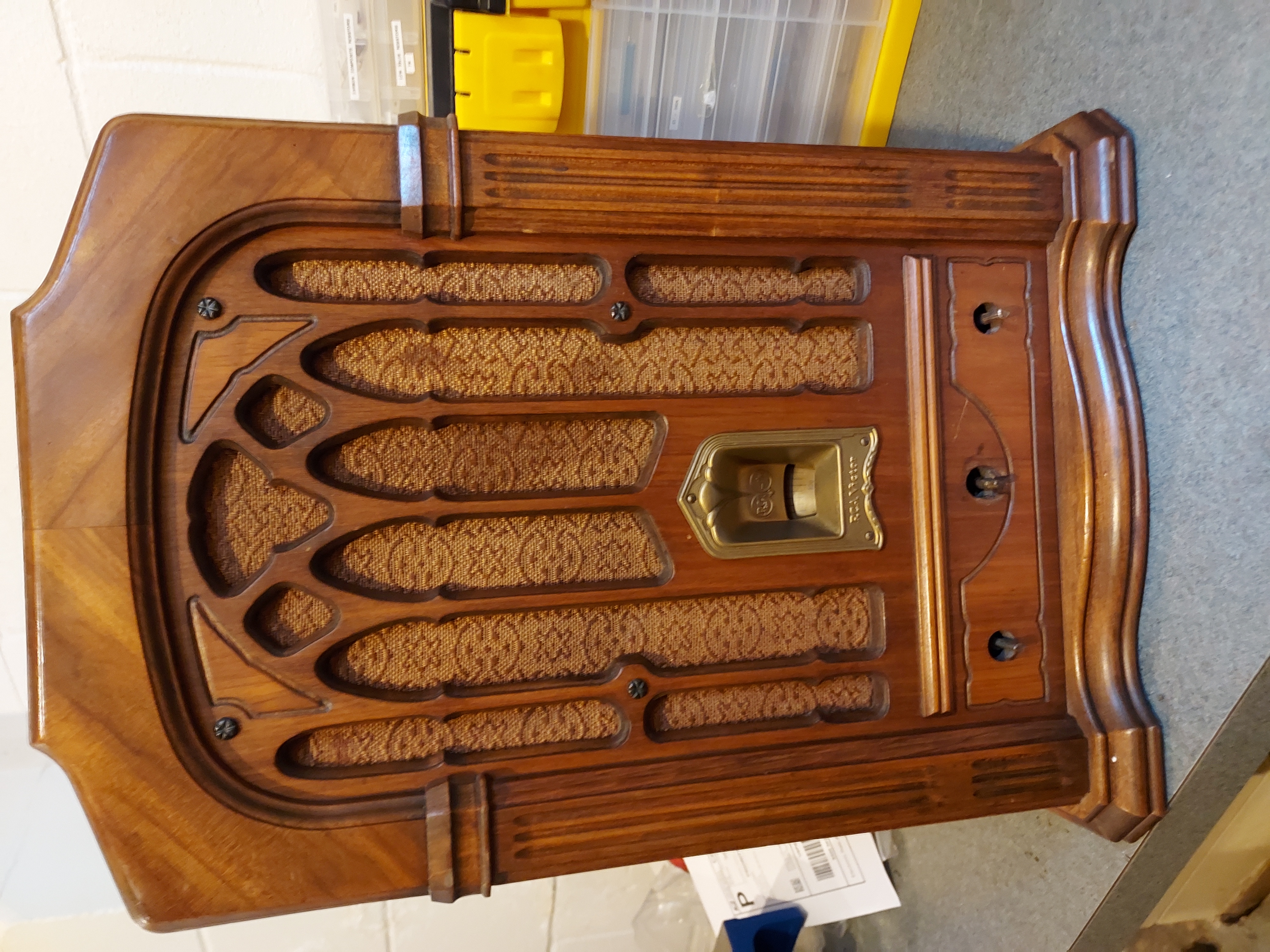
Back
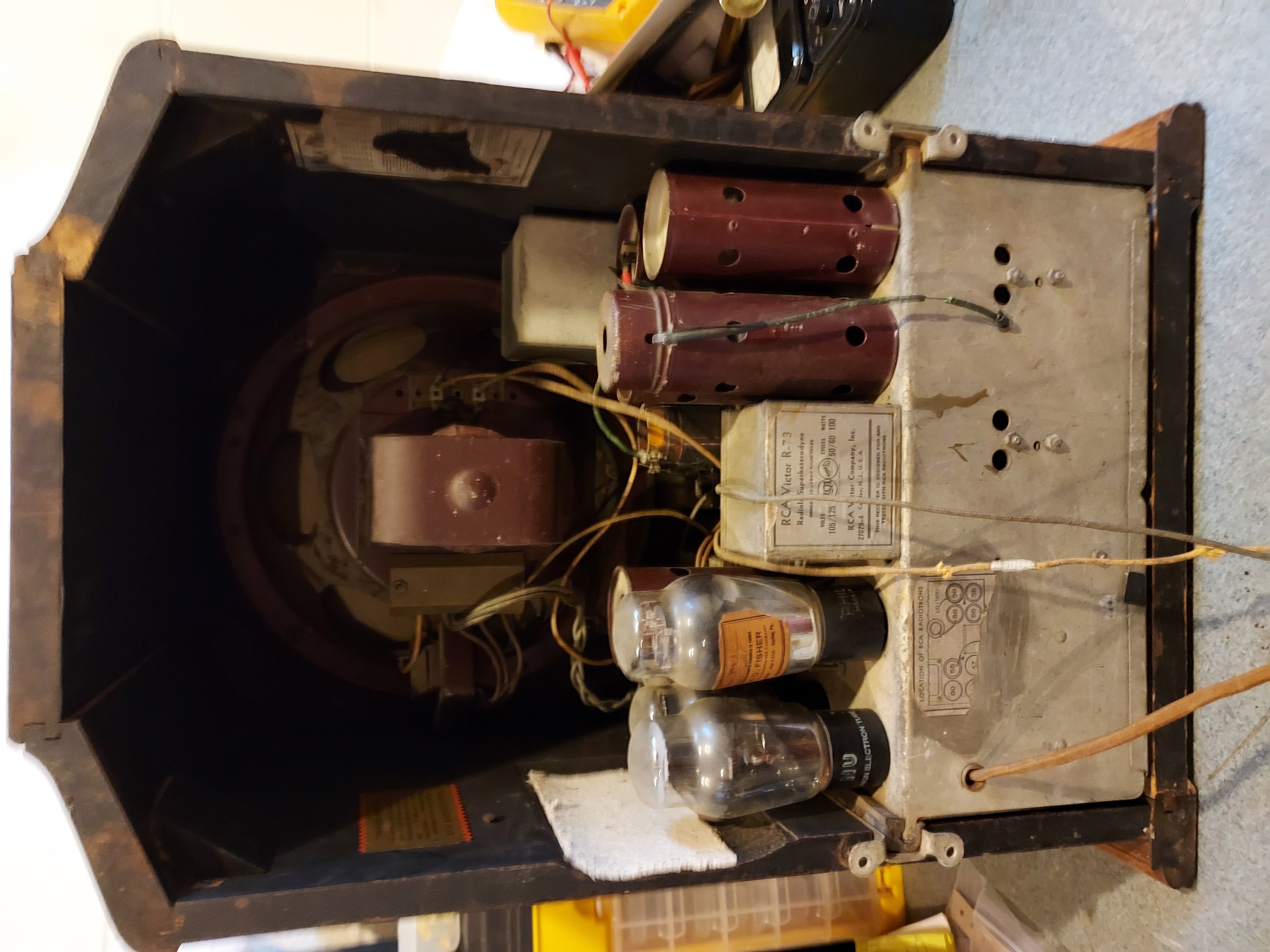
Asbestos
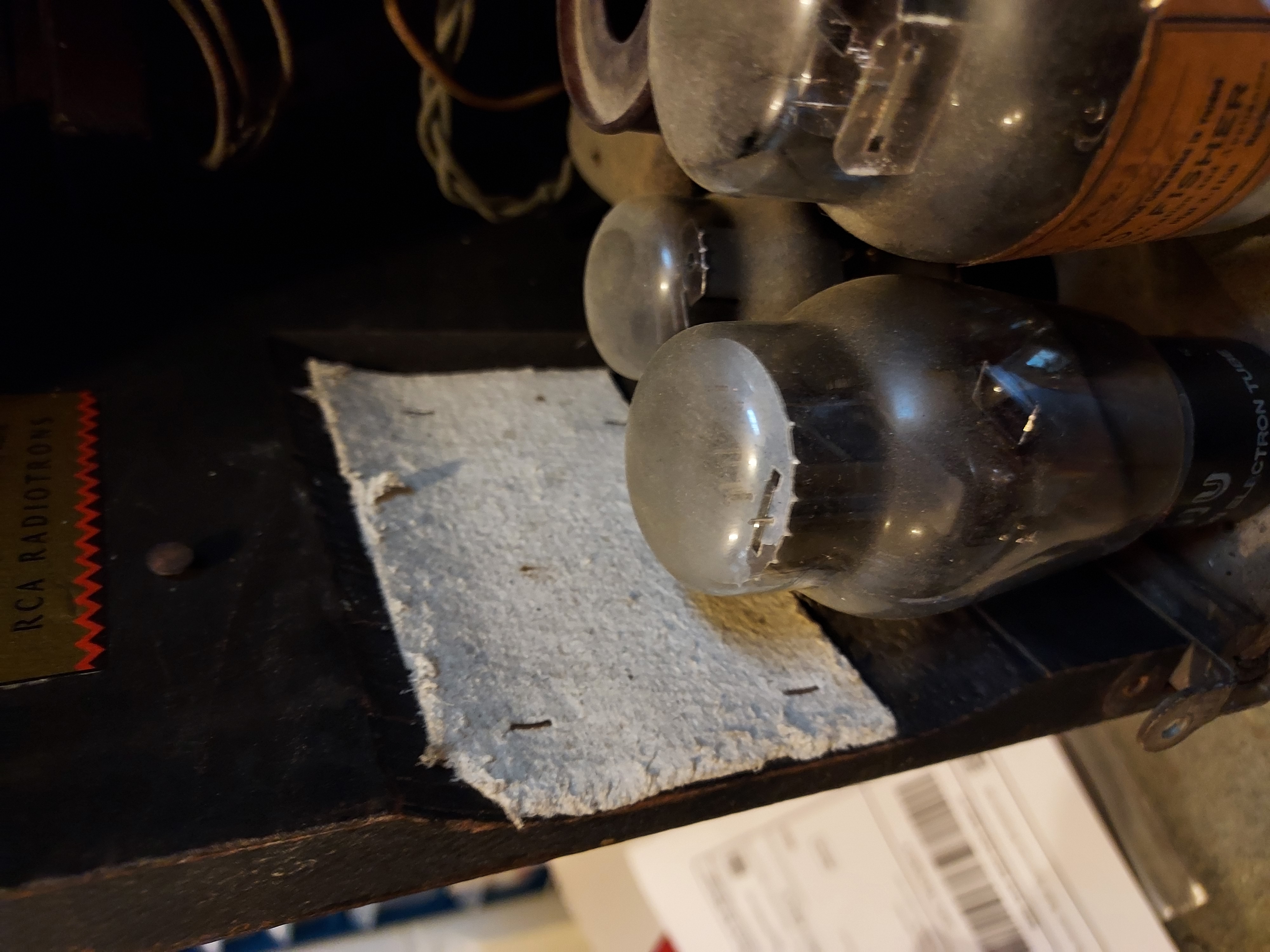
Chassis top
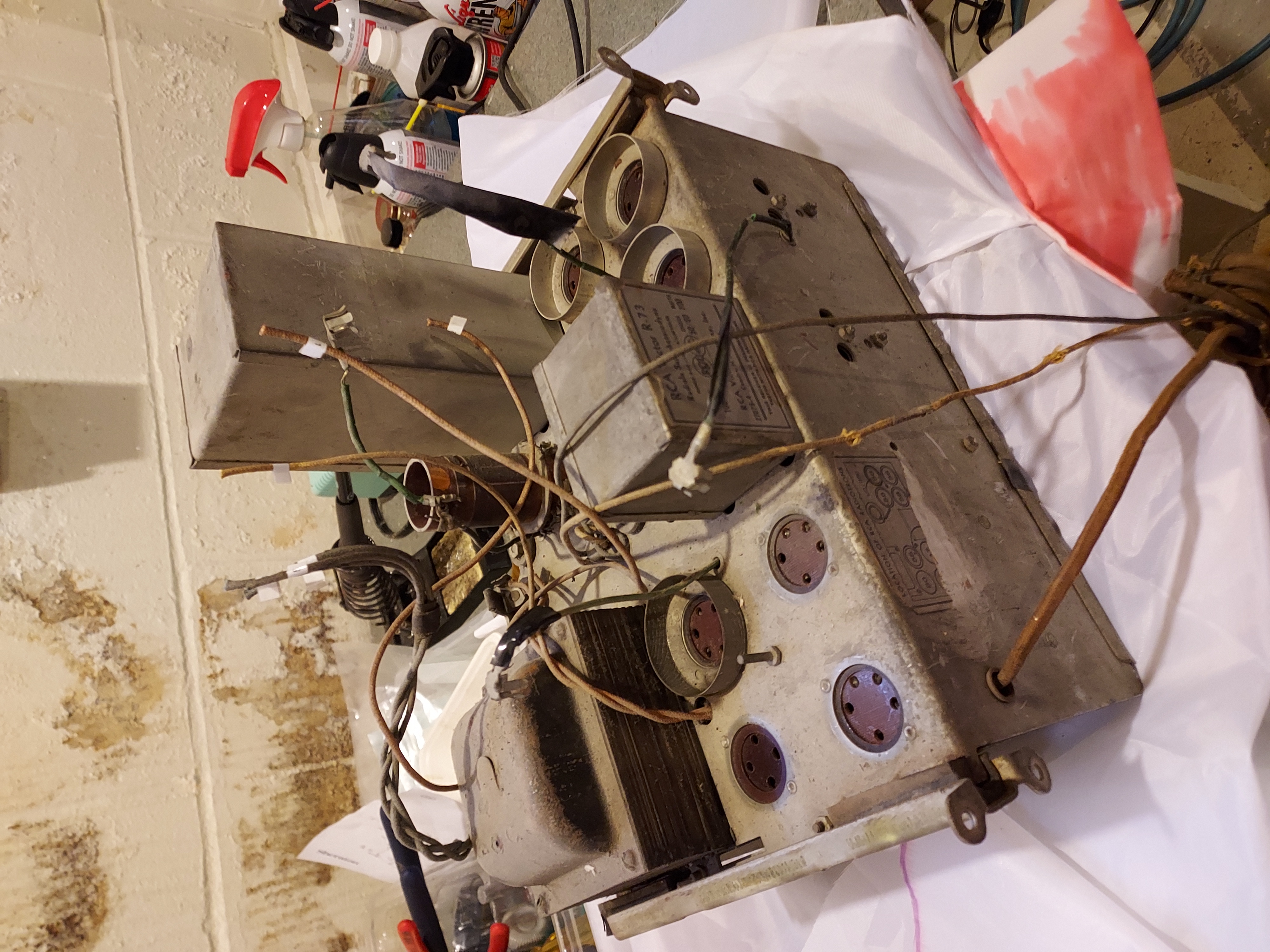
Bottom. Fully encased chassis.
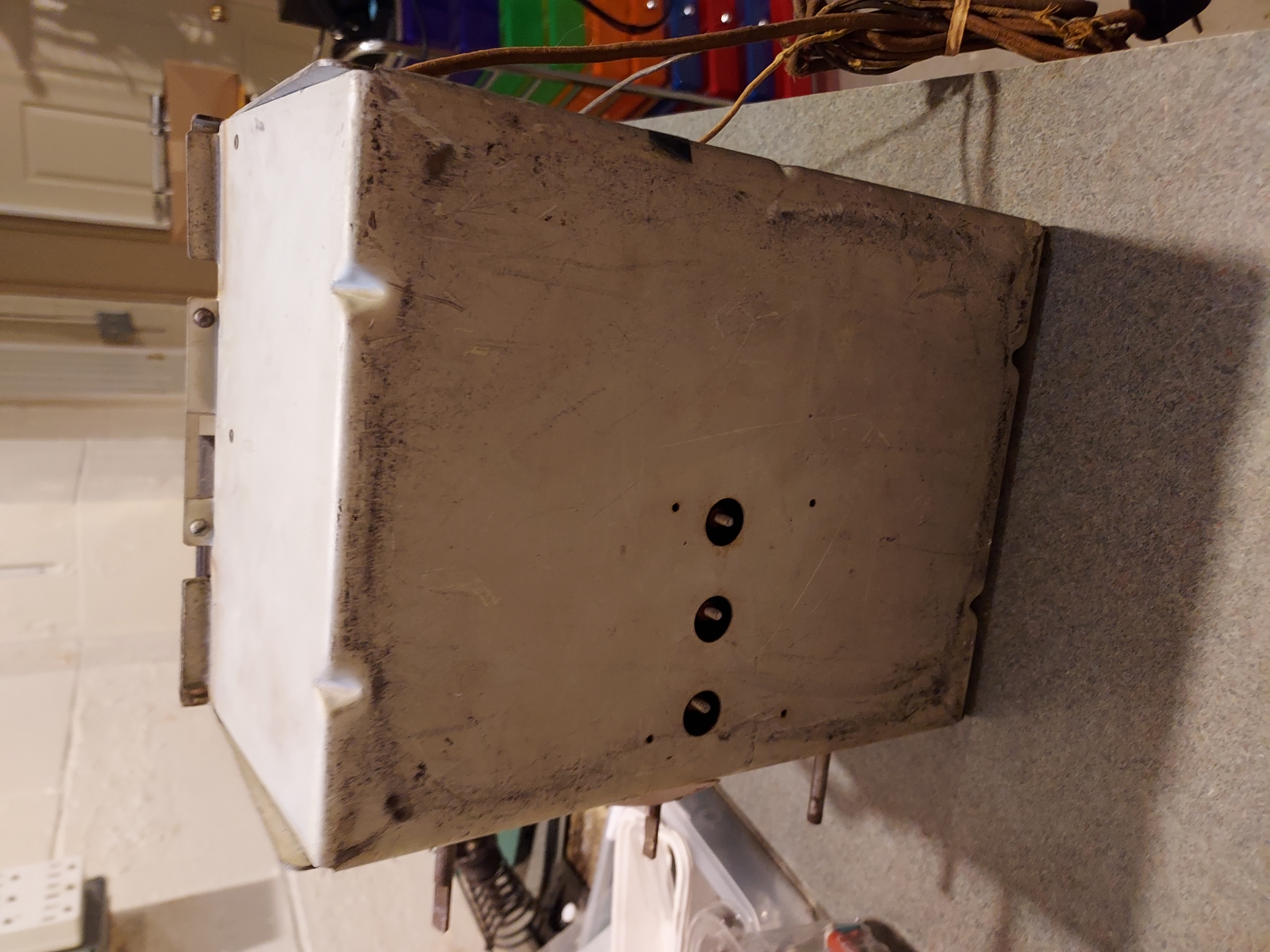
Inside the chassis
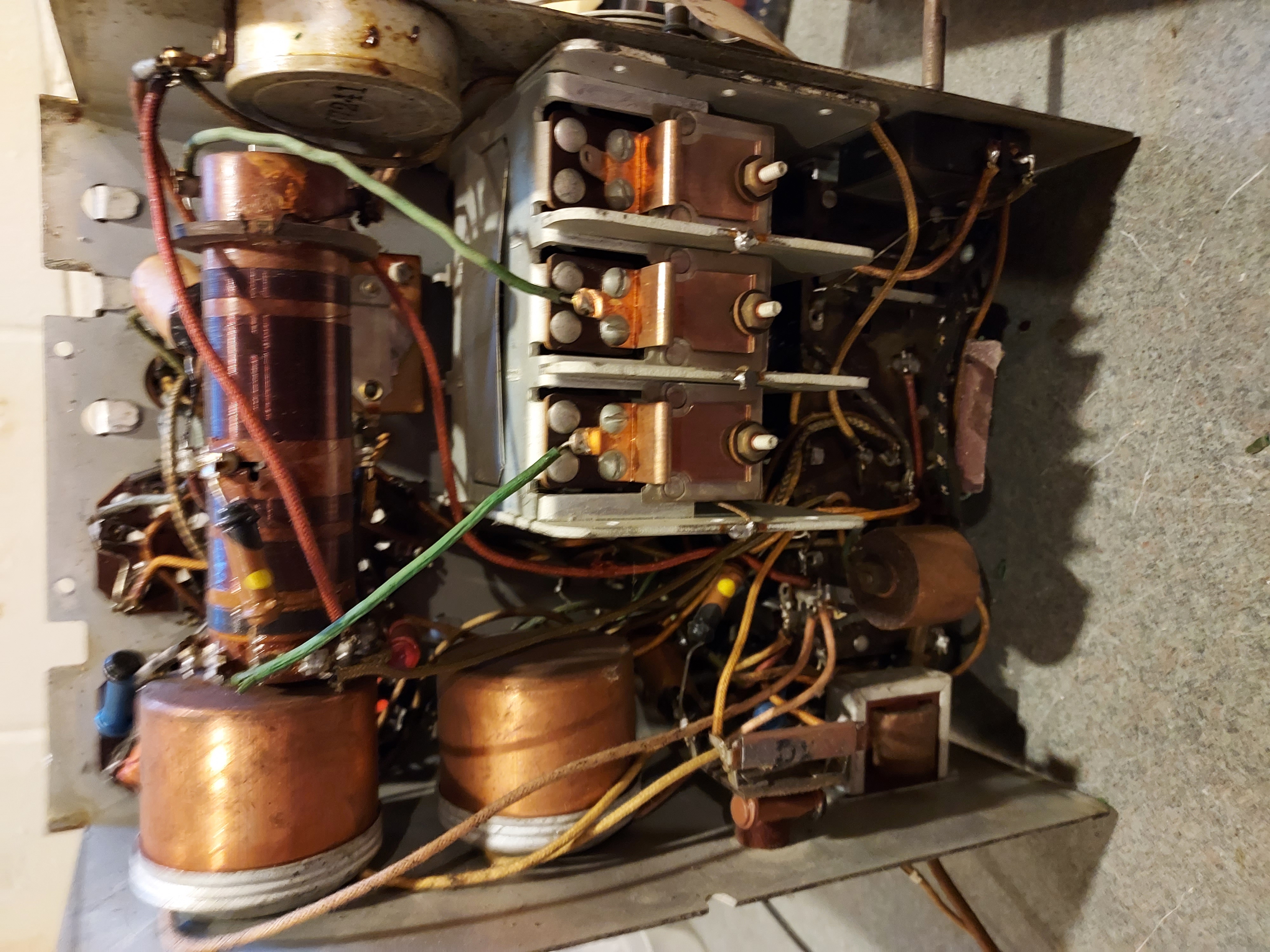
I checked the tubes: othher than the rectifier, all test better than new. Rectifier is somewhat weak, but seems like this is the case with every single radio I've dealt with. And those 80 tubes work fairly well below "Good", as long as this is not really below. Which this one is not.
So far this is it.
People who do not drink, do not smoke, do not eat red meat will one day feel really stupid lying there and dying from nothing.
Posts: 312
Threads: 30
Joined: Jul 2017
City: Hay Lakes, Alberta,Canada
Those RCA deep chassis are always "fun" to deal with.
Regarding the testing for the 80 (and most other rectifier tubes) don't rely on the "Good-Bad" scale when testing them. I'm not sure what type of tester you have, but most testers use a numbers scale as well and diode tubes have a fairly low number for a bad test; anything above that number is considered acceptable.
Posts: 15,301
Threads: 532
Joined: Oct 2011
City: Jackson, NJ
I have Hckok 600A.
People who do not drink, do not smoke, do not eat red meat will one day feel really stupid lying there and dying from nothing.
Posts: 1,117
Threads: 21
Joined: Jan 2014
City: Wellborn Florida
Looking forward to the restoration. Does your set have the 60 or 25 cycle power transformer.
Posts: 1,842
Threads: 140
Joined: Jan 2013
City: Westland, MI
Mike, take extreme care with removal of the 'heat shield' stapled to the cabinet. That is a classic looking case of degraded asbestos. I wouldn't recommend leaving it in. I'm sure someone here knows where it get thin heat shields to replace it with. Dampen it well with Windex before carefully easing the staples out of the cabinet. Put it all in a zip top plastic bag to dispose of it. Take care and BE HEALTHY! Gary
"Don't pity the dead, pity the living, above all, those living without love."
Professor Albus Dumbledore
Gary - Westland Michigan
Posts: 855
Threads: 8
Joined: Jul 2020
City: Greenlawn
State, Province, Country: NY
Rather similar but I guess slightly later model than my GE S22A (RCA R7A) which also has 47s in push pull. Good performing radio! Yours has a real nice cabinet! You will likely find that, unless you have an open transformer, changing caps and resistors is all you will need to do.
It is fun to try to get to the transformer and cap cans. I cheated and hung mine on the underside. Mine has 2 Marshons that I will eventually polish.
These are what I would think as the 2nd generation of radios actually built by the merged RCA Victor, with the Radiola 80 being the first. Victor Talking Machine build a few models of radios prior to their purchase by RCA, so Victor actually had the wherewithall to manufacture radios when RCA bought them.
+1 on the asbestos. Duno if degraded, prolly looked like that upon install. Nonetheless, wet it, carefully pull the staples (there is a special pair of pliers for that, available at HFT), bag it and trash it.
"Do Justly, love Mercy and walk humbly with your God"- Micah 6:8
Best Regards,
MrFixr55
(This post was last modified: 02-19-2023, 09:27 PM by MrFixr55.)
Posts: 1,429
Threads: 88
Joined: May 2008
City: Omak
State, Province, Country: WA
Hello morzh ,
Wow that is sure a nice set but it is a heavy one.
Sincerely Richard
Posts: 15,301
Threads: 532
Joined: Oct 2011
City: Jackson, NJ
Well.....I tend to leave asbestos sheets in place. If undisturbed, asbestos poses little danger. I could possibly spray it with something I bought for the same stuff in Transoceanic. Someone pointed me to it. Like automotive hi-temp silicone spray or something. Though this, I think, only made it worse.
My approach to asbestos is, "don't poke the sh**t, and it won't stink". 
Well, this, I think, is the first RCA I am dealing with. A total noob.
People who do not drink, do not smoke, do not eat red meat will one day feel really stupid lying there and dying from nothing.
Posts: 3,102
Threads: 54
Joined: Apr 2011
City: Lexington, KY
Mike, one thing about RCA is their service literature is very comprehensive. You can download load their "red book" service manuals on the "American radio history" site. They seem to be very clear scans. Good luck with that beast!
John KK4ZLF
Lexington, KY
"illegitimis non carborundum"
Posts: 15,301
Threads: 532
Joined: Oct 2011
City: Jackson, NJ
John
Thanks! I am about to start on the electronics, and I was wondering if I should go to NostalgiaAir, or to the Perpetual, which you gave me.
But yours is a much better idea.
BTW, would you be able to show me exact llink - on the WRH site thre are tons of info for RCA, and I do not know the exact name of the document.
PS. About 3-4 years ago I had a chance to buy the whole RCA Red Book issue, but while I was mulling that, someone else with more resolve came and took it. For a very low price too, and in superb condition.
Well, it would take a lot of space, and it is downloadable.
Riders PTM is more valuable to me as there are no good quality scans I know of, and NA is of varying quality, and Chuck seems to stop making his scans, and with it (even though the info is really spread over many volumes, and it is a pain to search for) I have clean documentation.
People who do not drink, do not smoke, do not eat red meat will one day feel really stupid lying there and dying from nothing.
(This post was last modified: 02-20-2023, 01:06 PM by morzh.)
Posts: 855
Threads: 8
Joined: Jul 2020
City: Greenlawn
State, Province, Country: NY
Hi Morzh,
Attached is the section of the 1933 RCA "Red Book" that covers this radio.
Below is a link to a website that discusses restoration of the rather similar RCA R7A "Suprette"
RCA Radiola R-7 Superette Restoration (mcclellans.com)
Very interesting volume control on this set. This set uses the 55 Duo Diode / triode as a detector / AFC / 1st AF Amp, as opposed to the R7A. One would think that the volume control would be in the usual place, but no, volume is controlled by varying bias on all AVC controlled stages. This set has no phono provision (at least not on the schematic) but putting in a switch, volume control and jack (external panel) ould not be hard. This will allow playing an MP3 through the unit which should sound better than over the air.
Hope this helps.
"Do Justly, love Mercy and walk humbly with your God"- Micah 6:8
Best Regards,
MrFixr55
(This post was last modified: 02-20-2023, 02:30 PM by MrFixr55.)
Posts: 4,611
Threads: 51
Joined: Sep 2008
City: Sandwick, BC, CA
Mike;
That RCA brings back memories of a few G.E sets I have worked on. I'm not sure where the filter caps are paper or electrolytic (dry) in that chassis, but they are inside that big can on the left front corner, along with the bypass caps. Most of the carbon resistors will be way off, I think they are on the top side of that terminal board on the opposite side of the tuning condenser. Taking the oscillator/rf coil out from the other side makes it much easier to work on, but make a diagram of what wires go to what terminal, which you will do anyhow as the methodical fellow that you are. That smaller can near the rear apron has the audio interstage transformer inside, the coil near the front is the antenna coil. These sets are good performers once they are working right, very selective, though the broadcast band tops out around 1600 KC, much like a TRF from that era.
Regards
Arran
Posts: 855
Threads: 8
Joined: Jul 2020
City: Greenlawn
State, Province, Country: NY
Hi Arran and Morzh,
If those GE sets were built between 1931 and 1934, they were built by RCA. My GE S-22A is an RCA. The GE label is slapped right over the RCA R-7a label. Same with the Westinghouse version. Those W'house Columnaires were Radiola 80s with a clock. My S22 has Marshon wet electrolytics, but your filters are in the "Cap Pack located on the left front of the chassis. RCA did use dry 'lytics in some sets in 1933. (my R-28 has a dry lytic cap. Hope that the Cap Pack is not potted but I don't hold much hope for that. Per the RCA Red Book for the R73 has filters of 12uF before the field coil and 8uF after. Field coil is in the B- leg of the power supply instead of the B+ which was RCAs habit for previous models like the Radiola 80
Frequencies higher than about 1,550KHz were reserved for police and marine bands. Only after they moved police up to FM did they extend the range of the broadcast band to 1,700 KHz That's why the R73 tops out at that frequency.
"Do Justly, love Mercy and walk humbly with your God"- Micah 6:8
Best Regards,
MrFixr55
(This post was last modified: 02-20-2023, 08:04 PM by MrFixr55.)
Posts: 13,776
Threads: 580
Joined: Sep 2005
City: Ferdinand
State, Province, Country: Indiana
--
Ron Ramirez
Ferdinand IN
Posts: 1,842
Threads: 140
Joined: Jan 2013
City: Westland, MI
Mike, if you are leaving the asbestos in it you could mask it off from the rest of the cabinet then lightly spray it with white high temperature enamel. That would 'encapsulate' it. Take care and BE HEALTHY! Gary
"Don't pity the dead, pity the living, above all, those living without love."
Professor Albus Dumbledore
Gary - Westland Michigan
Users browsing this thread: 1 Guest(s)
|











